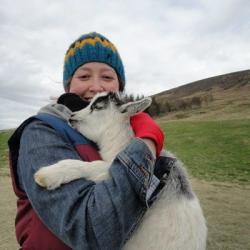'Season Of The Witch' by Árni Þórarinsson, translated by Anna Yates
When we meet Einar, a seasoned Reykjavík crime reporter, at the opening of Árni Þórarinsson’s ‘Season of the Witch,’ he—much like the country around him—is in the midst of great change, and he’s not terribly happy about it. It’s the early 2000s, Iceland’s pre-crash boom years, and given the choice of “the whiskey or the work,” Einar begrudgingly accepts banishment to the paper’s new Akureyri headquarters in North Iceland, where industrial growth has begun to drastically alter the texture of village life. But while Einar can’t escape the more banal aspects of provincial journalism—such as ask-a-local “Question of the Day” segments and articles about lost dogs—he soon finds that this small community has more than enough murder and violent crime to make for worthy headlines.
Originally published in 2005, ‘Season of the Witch’ is a tightly-plotted portrait of Iceland before everything went wrong, born of what the author has said was “an increasing sense of unease about my country.” As he remarked in an interview, “I felt we were quickly losing our traditional values and way of life to a new kind of value system… I’m talking about egotism, greed, and a lack of respect for things that can’t be bought and sold.” This self-serving attitude of, as Árni put it, “I do it because I can,” resonates throughout the novel’s three intertwining plot lines: the murder of the charismatic lead actor in a high school production of ‘Loftur the Sorcerer,’ the increasingly violent activities of a trio of well-connected small-town troublemakers, and the death of a local woman who everyone—with the exception of the victim’s elderly mother—thinks was nothing but an unfortunate accident.
In his stodgy resistance to change—to everything from the fact that he’s expected to carry a cell phone and use a laptop for work, to the enforcement of indoor smoking bans—Einar exemplifies this sense of unease, but that isn’t to say that he, or the novel, is pushing for an all out return to the ‘good old days.’ Rather, his kvetching and suspicion have some credibility because they are balanced with self-awareness and compassion—the desire to become a better person and, when necessary, even embrace the changing times. The best example of this is illustrated with his own sheepish admission that he was initially shocked when his daughter brought home a black boyfriend. “It opened my eyes to my own prejudices,” he says. “I’m doing my best to grow up.”
While the novel is by no means styled as a thriller, it is immensely engaging due in equal measure to its simple and fluid prose style as to Einar’s incisive, if occasionally caustic, observations about goings-on around town, the less glamorous aspects of life as a journalist, and the suspect motivations of the people around him. The story’s secondary characters also flourish throughout the narrative—from Einar’s floundering, beleaguered boss and his immensely capable friend and photographer Jóa to the pensive younger brother of the murdered teenager—each adding further layers of richness to the story and scene.
Resonating in the background is also the real life town of Reyðarfjörður, once a small fishing village but home to the Alcoa Fjardaál aluminium smelter since 2004. Árni thinly disguises the town as “Reydargerdi” in the novel (interestingly, as other towns, such as Akureyri and Hólar, keep their real names). The characters debate aspects of such developments in the regions—new industry in a previously declining area, new investment capital, an influx of foreign workers, continuing population drain to Reykjavík—although the book doesn’t come to any real conclusion about the “aluminum plant or steelworks or some such infernal monstrosity,” perhaps because, don’t forget, the Alcoa plant hadn’t been completed when the novel was first published.
Although themes of good and evil run through the novel—emphasised by quoted passages from the ‘Loftur’ play—by and large, ‘Season of the Witch’ does not end with any black and white moral declarations, but rather finds its justice somewhere in the grey area. As Einar asks during an interview, “Isn’t it a fine line between acting responsibly and presenting a false, or at least edited, version of the truth? Isn’t that a matter of responsibility, too?”
Buy subscriptions, t-shirts and more from our shop right here!
















